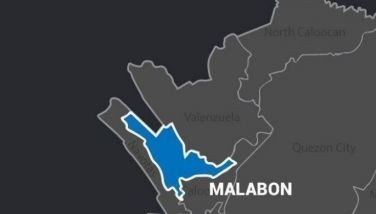DOH to expand safe water project in Pangasinan, La Union
September 17, 2006 | 12:00am
LINGAYEN, Pangasinan — Two years ago, there was a cholera outbreak in central Pangasinan, with 4,403 cases of acute gastroenteritis recorded, including 47 deaths.
Doctors suspected it was due to unsafe drinking water due to the presence of Vibrio cholera bacteria. The victims complained about the sudden onset of painless, watery and profuse diarrhea.
After two years, the regional office of the Department of Health (DOH) reported that it has made initial success by posting no diarrhea cases in three months in the intervention site, thanks to its safe water system (SWS) project.
Dr. Gloria Balboa, DOH deputy regional director, told The STAR that although the result is not yet conclusive to show the project’s 100 percent success, they have decided to expand it to other central Pangasinan towns facing a high risk of diarrhea based on the 2004 experience.
On Sept. 27, the DOH is launching an expanded project, covering Bayambang, Basista, San Carlos City, Malasiqui, Mapandan, Sta. Barbara and Bolinao, where the cholera outbreak happened in 2004.
In La Union, the DOH is targeting San Fernando City although the governor plans to implement it provincewide.
The 2004 cholera outbreak prompted the DOH-Region 1 office, upon the recommendation of the World Health Organization (WHO), to put mechanisms in place for the treatment and safe storage of household water.
The SWS project involves a point-of-use treatment of drinking water using 1.25 percent sodium hypochlorite solution given for free, and the safe storage of water in plastic containers with covers and faucets.
"This is the same chlorine supposed to be mixed with water for safe drinking, but then people complained about bad taste and smell," Balboa said, adding that the solution was improved until it became acceptable to the people.
After the project’s pilot test in 2005 in San Carlos City and Malasiqui town, the results were presented to the SWS Technical Working Group, Bureau of Food and Drugs, National Center for Disease Prevention and Control, Bureau of International Health Cooperation, and WHO.
An agreement was reached to expand the project to 20 percent of all high-risk households in Pangasinan as well as in La Union, Balboa said.
Doctors suspected it was due to unsafe drinking water due to the presence of Vibrio cholera bacteria. The victims complained about the sudden onset of painless, watery and profuse diarrhea.
After two years, the regional office of the Department of Health (DOH) reported that it has made initial success by posting no diarrhea cases in three months in the intervention site, thanks to its safe water system (SWS) project.
Dr. Gloria Balboa, DOH deputy regional director, told The STAR that although the result is not yet conclusive to show the project’s 100 percent success, they have decided to expand it to other central Pangasinan towns facing a high risk of diarrhea based on the 2004 experience.
On Sept. 27, the DOH is launching an expanded project, covering Bayambang, Basista, San Carlos City, Malasiqui, Mapandan, Sta. Barbara and Bolinao, where the cholera outbreak happened in 2004.
In La Union, the DOH is targeting San Fernando City although the governor plans to implement it provincewide.
The 2004 cholera outbreak prompted the DOH-Region 1 office, upon the recommendation of the World Health Organization (WHO), to put mechanisms in place for the treatment and safe storage of household water.
The SWS project involves a point-of-use treatment of drinking water using 1.25 percent sodium hypochlorite solution given for free, and the safe storage of water in plastic containers with covers and faucets.
"This is the same chlorine supposed to be mixed with water for safe drinking, but then people complained about bad taste and smell," Balboa said, adding that the solution was improved until it became acceptable to the people.
After the project’s pilot test in 2005 in San Carlos City and Malasiqui town, the results were presented to the SWS Technical Working Group, Bureau of Food and Drugs, National Center for Disease Prevention and Control, Bureau of International Health Cooperation, and WHO.
An agreement was reached to expand the project to 20 percent of all high-risk households in Pangasinan as well as in La Union, Balboa said.
BrandSpace Articles
<
>
- Latest
- Trending
Trending
Latest
Trending
Latest
Recommended






























